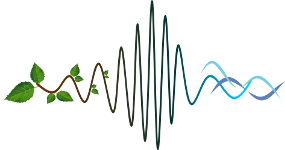Male oyster toadfish (Opsanus tau) produce "boop" sounds to attract females to dens in shallow estuaries. Calls produced in the natural soundscape include snapping shrimp, soniferous fishes, and bottlenose dolphin (Tursiops truncatus). Dolphins are known toadfish predators. This study will determine if anthropogenic noise from large and small vessels and predator sounds cause acoustic disturbance in oyster toadfish living in two habitats (concealed in seagrass beds or on exposed sand flats). Toadfish colonized artificial dens placed in each habitat. Six sound types were played to toadfish in dens positioned 1 m from an underwater speaker. The sound treatments were snapping shrimp sounds (SN, control), low-frequency (LFD) and high-frequency (HFD) bottlenose dolphin biosonar, large vessels (LV) and outboard motorboat (OB) noises, and a combination of anthropogenic and predator sounds (LV+LFD). Toadfish calling rates were quantified in 600-s intervals before, during, and after noise exposure and mean call rates were compared using bootstrapped repeated measures ANOVA. Playback type, habitat type, and the number of toadfish colonizing each den (covariate) significantly influenced toadfish calling rates (p≤0.047). Calling rates declined during the playback, compared with pre-exposure levels (p≤0.042), with highest calling rates in seagrass (pre=5.9, during=2.2, and post=6.9 calls/min), compared with sand (pre=2.2, during=1.5, and post=1.9 calls/min). The magnitude of acoustic disturbance occurred in the following order SN< OB≤LV≈HFD≈LFD< LV+LFD, with all treatments different from SN (p≤0.003). This suggests that both vessel noises and predatory dolphin sounds are detected by reproductively active male toadfish in the natural soundscape. Acoustic disturbances by vessels appear to have synergistic impacts on toadfish calling rates when occurring with natural predator sounds. In busy navigation channels, repetitive boat noise disturbance, especially when combined with predator sounds, may cause reduced mating success (fewer mating opportunities) for oyster toadfish in a natural soundscape.
|
|
|
|
Tuesday
17
Noise I
› 14:30 - 14:45 (15min) › Grande Galerie Evolution Conference Hall
Anthropogenic sounds (vessels) reduce acoustic communication in oyster toadfish (Opsanus tau)
1 : Coastal Resources Management
(CRM)
-
Website
East Carolina University, 379 Flanagan Building, Greenville, NC 27858-4353 -
United States
2 : Institute of Coastal Science and Policy
(ICSP)
-
Website
East Carolina University, Suite 250 Flanagan Building, Greenville, NC 27858-4353 -
United States
3 : Department of Biology
-
Website
East Carolina University, N108 Howell Science Complex, Greenville, NC 27858-4353 -
United States
|
| Online user: 2 | RSS Feed |

|

 PDF version
PDF version